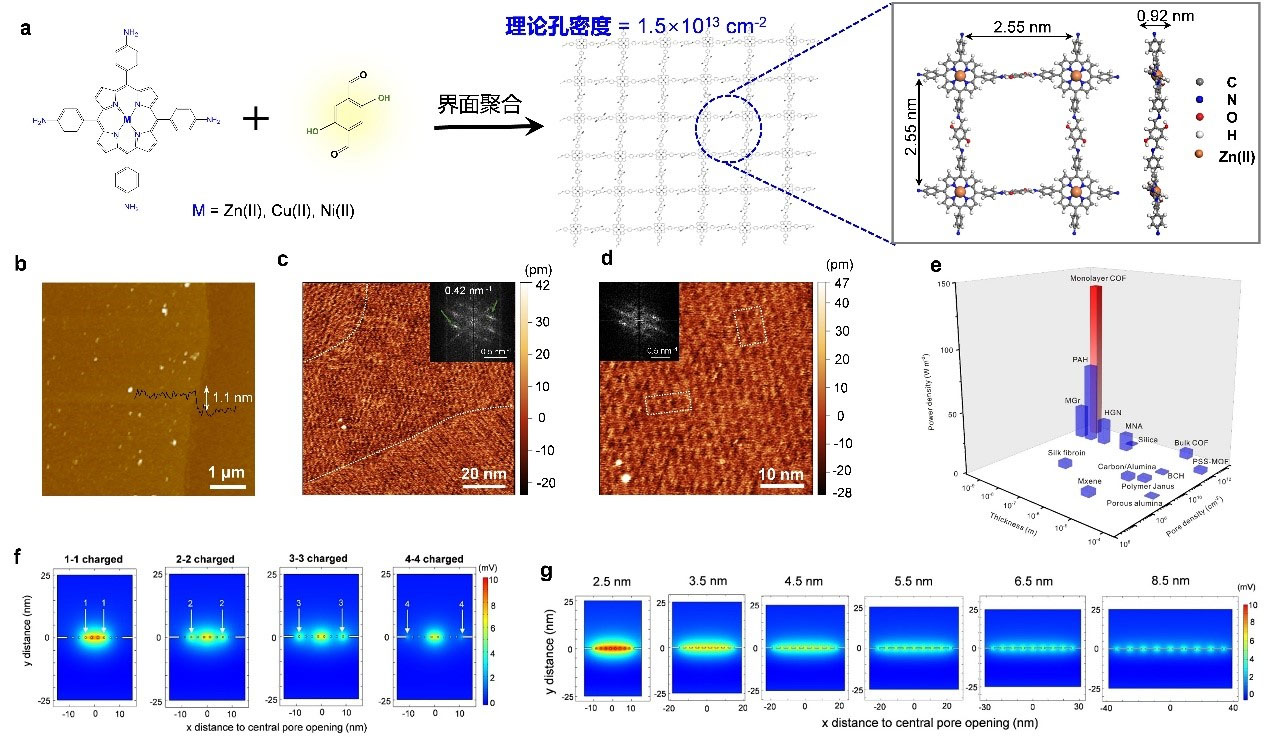| May 14, 2022 |
Harvesting blue energy by covalent organic framework monolayer membranes
(Nanowerk News) The development and utilization of energy is the basis of human survival and social sustainable development. As a part of Gibbs free energy, mixing salt solutions with different concentrations release the salinity gradient energy, also called blue energy. Generally, the output power can be improved by modulation of the selectivity and ionic conductivity, namely, reducing the pore size, increasing the surface charge density and reducing the transmembrane resistance.
|
|
A research group led by Prof. TANG Zhiyong and Prof. LI Lianshan from the National Center for Nanoscience and Technology (NCSNT) of the Chinese Academy of Sciences (CAS) has recently developed covalent organic framework (COF) monolayers that greatly improve the membrane-based osmotic power generation.
|
|
This study was published in Nature Nanotechnology ("Advancing osmotic power generation by covalent organic framework monolayer").
|
 |
| Schematic diagram of COF monolayer synthesis, characterizations, osmotic power generation and pore-pore coupling. (Image: LI et al.)
|
|
According to the researchers, the positively charged porphyrin-based COF monolayers were fabricated by lamellar assembly and polymerization at the pentane/water interface. The periodic nanopore size is around 2 nm, with pore density up to 1013 pore cm-2, and the COF monolayer also exhibits a considerable mechanical robustness with an average in-plane elastic modulus of 166 N m-1.
|
|
They found that closely spaced pore arrays give a strong pore-pore coupling, resulting in a synergistic effect to increase the selectivity, while ensuring the ultrahigh ionic conductivity. The anion selective COF monolayer membranes achieve an unprecedented power density of over 200 W m-2 by mixing the seawater and river water.
|
|
"The uniform nanopore structure and molecularly-thin thickness provide an ideal platform for the study of selective mass transfer process, and is expected to break the selective permeability trade-off of separation membrane," said Prof. TANG, "it also paves new avenues for other low-resistance membrane applications."
|

